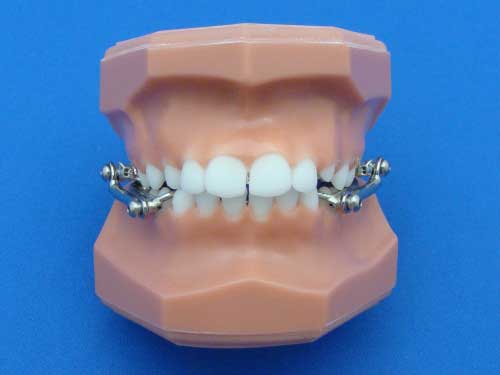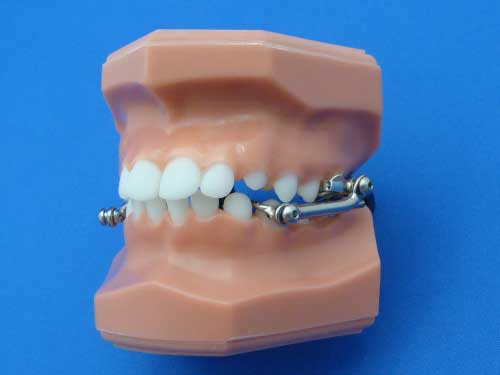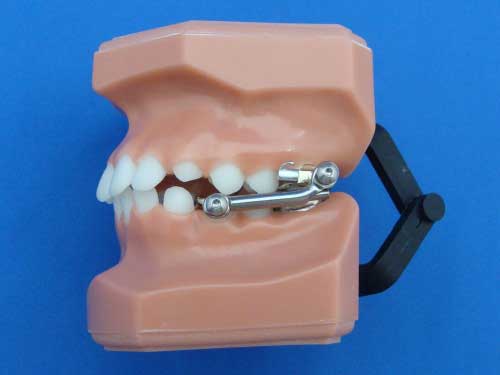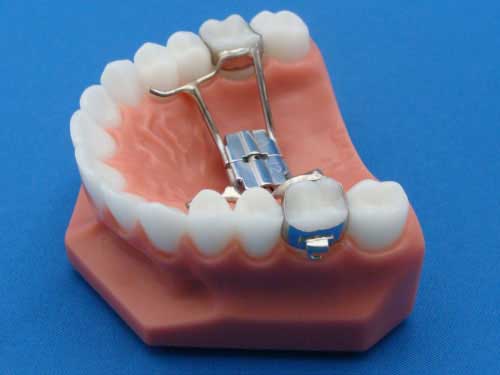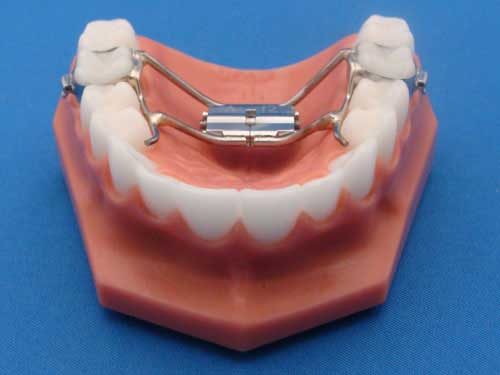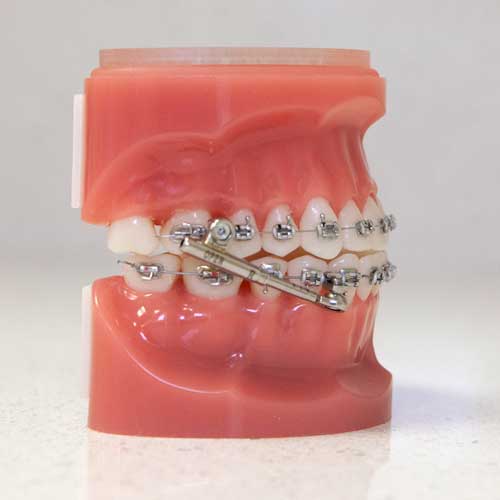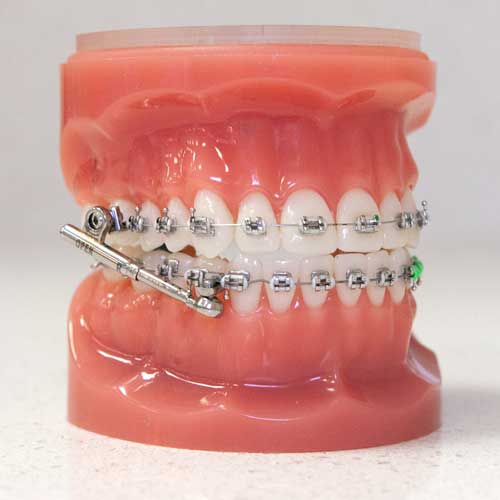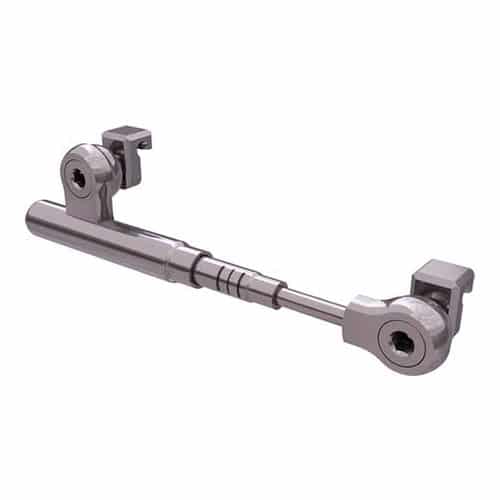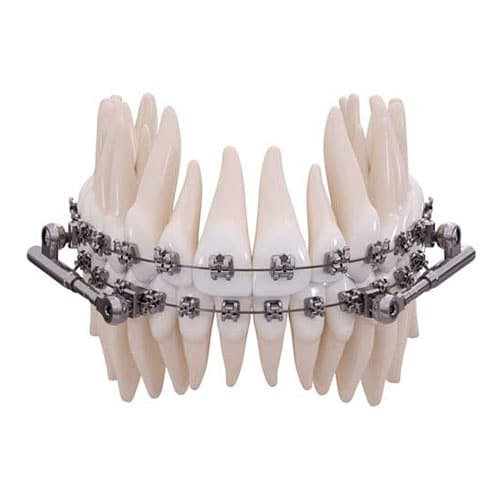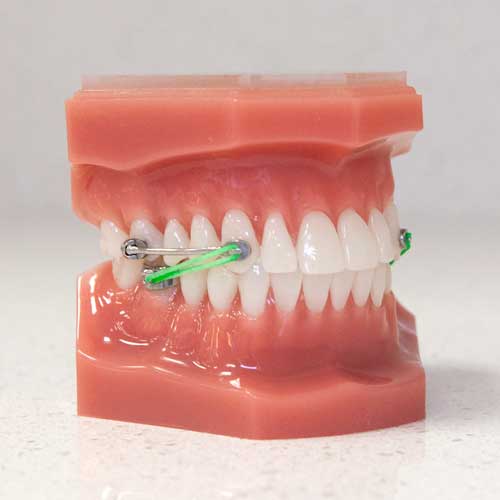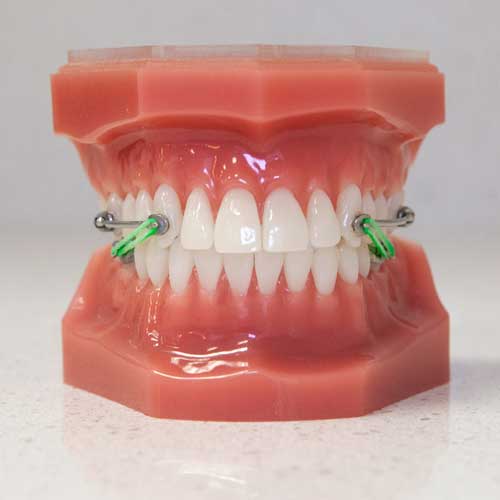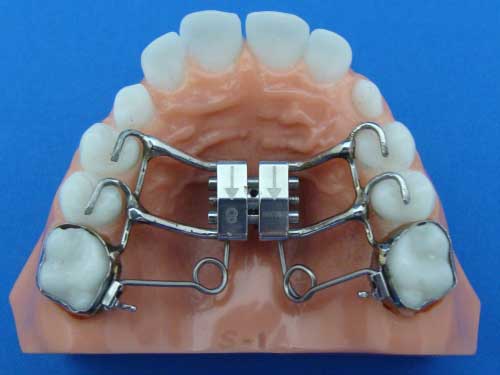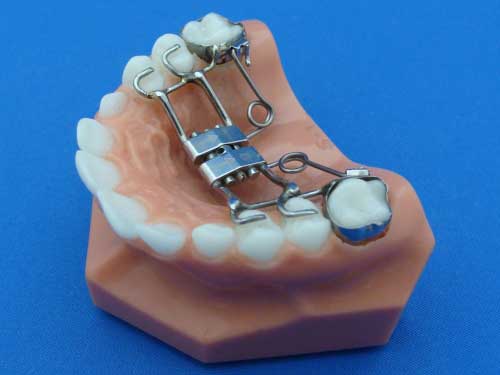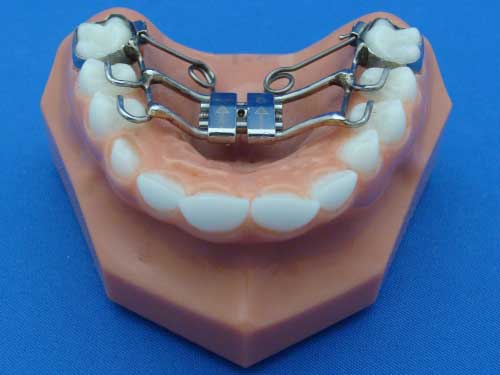Appliances
Appliances
Herbst
If upper jaw growth is outpacing lower jaw growth, a Herbst appliance can be used to help correct this skeletal discrepancy. The Herbst offers dual correction by holding back the growth of the upper jaw while simultaneously posturing the lower jaw forward. This accelerates the growth of the lower jaw and helps to both correct the bite and benefit the facial profile. A Herbst appliance is bonded to both the upper and lower back molars and is connected by a cantilever.
Expander or RPE (Rapid Palatal Expander)
An expander is a customized appliance that can be used to widen the upper jaw until most patients are in their mid-teens. The expander is banded onto the top molars in the back of the mouth and has two halves that are connected in the middle with a series of barrel screws. A small metal key is used to turn the barrel screws and obtain expansion of the upper jaw. As the upper jaw expands, the teeth in the lower jaw will naturally upright themselves to maintain contact with the upper teeth.
Our doctors will prescribe a specific number of turns for the expander based on the expansion your child needs. The assistants will guide you through your first successful, complete turn of the expander at your child’s expander bonding appointment. After expansion is complete, the expander will remain in place for 6 months while the bone solidifies into its new, larger form.
Appointment series:
- iTero scan and separators (Wait approximately 3 weeks for fabrication)
- RPE bonding
What Your Child May Experience:
- In most cases, separators (small, thick rubber bands) will be placed in front of the upper back molars when your child is scanned for their expander. The separators create space around the molars so we can comfortably bond the expander. This can be the most uncomfortable appointment. The separators feel like having a large piece of food stuck between your teeth and we all know how obnoxious that feels. This discomfort usually subsides within the first couple days after placement.
- A gap may develop or widen between your child’s front two teeth as you complete the expander turns. Don’t worry. We’ll close it up with braces.
- Your child may have difficulty speaking immediately after the expander is placed. This is completely normal. Their tongues are trying to find comfortable new resting places and that may take a couple days. We encourage our patients to talk as much as they can so they will acclimate faster. This is a perfect time to read some books aloud, sing in the shower, or have a family karaoke party!
- Because the expansion is very gradual, most children don’t experience any pain with the nightly turns.
- Your child may have extra saliva production during the time while you are actively turning the expander.
- Food may occasionally become struck between the top of the expander and the roof of the mouth. Vigorous swishing with water is usually enough to dislodge the food.
Powerscope
Nearly all orthodontic patients will wear rubber bands for bite correction and maintenance during their treatment. However, if a great amount of bite correction is needed, a powerscope may be used. A powerscope is essentially a rubber band that can’t be taken off. Powerscopes remove the burden of compliance from the patient and provide constant corrective force to help resolve bite issues. The powerscope is attached directly to the upper and lower wires and is designed as a telescoping mechanism that expands and contracts with the natural movements of the jaw.
Carriere Distalizer
A Carriere Distalizer is typically used before braces to correct overjet; when the upper teeth protrude ahead of the lower teeth. In the top arch, the Carriere looks like a metal bar that is bonded from the upper canines to the back upper molar. Along the bottom arch, the Carriere is effectively a banded Lower Lingual Holding Arch. Your child will wear rubber bands from the top canine to the band on the lower back molar. This elastic force enables the upper segment of teeth within the metal bar to be moved back as a unit. The backward movement, or distalization, creates space for alignment of the teeth. The Carriere is generally used for 3-6 months before braces are bonded on.
Pendex
A Pendex is a customized appliance that can be used to widen the posterior (back) of the upper jaw and fix a posterior crosssbite. The Pendex is banded onto the top molars in the back of the mouth and a series of metal arms are bonded onto the adjacent molars. Like an expander, the Pendex is connected in the middle with a series of barrel screws. A small metal key is used to turn the barrel screws and obtain posterior expansion of the upper jaw.
Our doctors will prescribe a specific number of turns for the Pendex based on the expansion your child needs. The assistants will guide you through your first successful, complete turn of the Pendex at your child’s Pendex bonding appointment. After expansion is complete, the Pendex will remain in place for 6 months while the bone solidifies into its new, larger form.
Appointment Series:
- iTero scan and separators (Wait approximately 3 weeks for fabrication)
- Pendex bonding
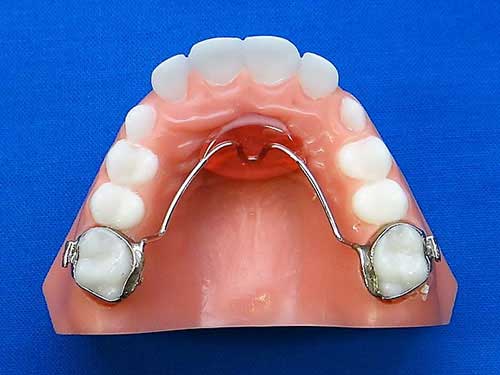
Nance (An Upper Space Maintainer)
A Nance is banded onto the top molars in the back of the mouth and has an acrylic pad that rests behind the upper front teeth. A connecting wire arcs from band to band and through the acrylic pad, holding space until the teeth erupt. We’ll monitor your child’s eruption regularly while the Nance is in place and will remove it when the permanent teeth are safely in their spaces.
Appointment Series:
- iTero scan and separators (Wait approximately 3 weeks for fabrication)
- Nance bonding
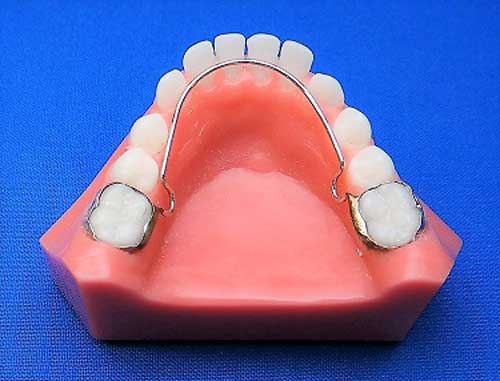
Lower Lingual Holding Arch
A Lower Lingual Holding Arch is bonded on the bottom molars in the back of the mouth. A connecting wire arcs from molar to molar and rests along the back of the bottom teeth, holding space until the permanent teeth erupt. We’ll monitor your child’s eruption regularly while the Lower Lingual Holding Arch is in place and will remove it when the permanent teeth are safely in their spaces.
Appointment Series:
- iTero scan and separators (Wait approximately 3 weeks for fabrication)
- Lower Lingual Holding Arch bonding
